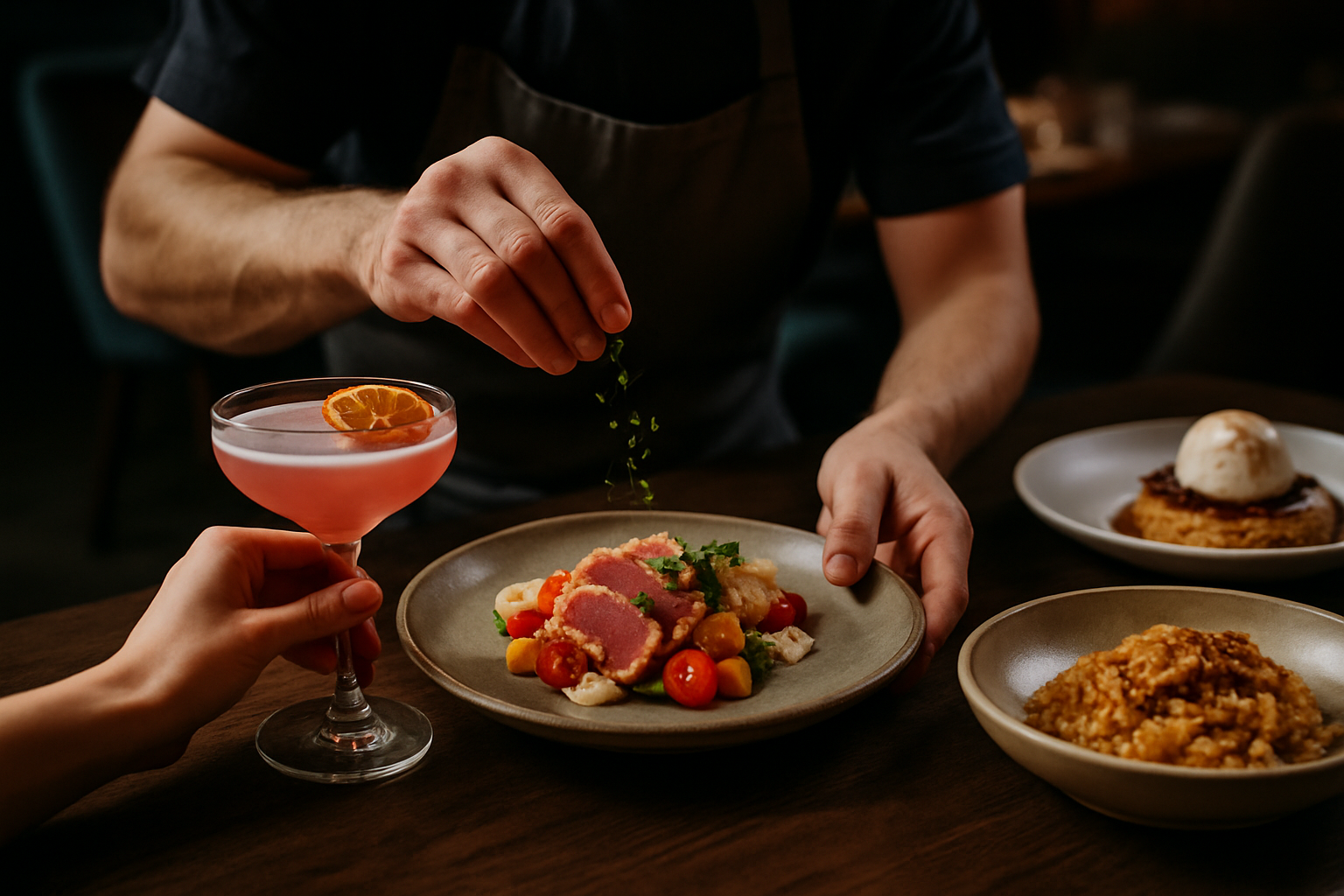Culinary Alchemy: Edible Flowers Transform Dining
Discover the enchanting world of edible flowers, where vibrant petals become a palette for culinary artistry. From delicate garnishes to flavor-packed ingredients, these botanical wonders are revolutionizing modern gastronomy. Join us as we explore how chefs and home cooks alike are harnessing nature's beauty to create visually stunning and palate-pleasing dishes that tantalize all the senses.

Petal Palette: Exploring Edible Flower Varieties
The world of edible flowers is vast and diverse, offering a wide array of flavors, colors, and textures for culinary exploration. Some popular varieties include the peppery nasturtium, the citrusy marigold, and the delicate, sweet-scented rose. Lavender, with its distinctive aroma, adds a floral note to both sweet and savory dishes, while the bright blue petals of borage offer a mild cucumber flavor. Pansies and violas not only provide a burst of color but also a subtle mint-like taste. Chamomile flowers, known for their calming properties in tea, can also be used to infuse a gentle, apple-like flavor into various recipes. For those seeking a more intense flavor profile, garlic chives and chive blossoms offer a savory, onion-like punch. Understanding the unique characteristics of each flower is key to using them effectively in cooking and creating harmonious flavor combinations.
From Garden to Plate: Cultivating and Sourcing Edible Flowers
Growing your own edible flowers is a rewarding way to ensure a fresh, pesticide-free supply for your culinary creations. Many edible varieties are easy to cultivate, even in small spaces or container gardens. Nasturtiums, calendulas, and pansies are particularly well-suited for novice gardeners, as they are relatively low-maintenance and quick to bloom. When planning your edible flower garden, consider factors such as sunlight, soil quality, and watering needs for each variety. For those without a green thumb or limited outdoor space, local farmers’ markets and specialty grocers are increasingly offering edible flowers. When sourcing flowers, it’s crucial to ensure they are specifically grown for culinary use and free from harmful chemicals. Always verify the edibility of flowers before consumption, as some varieties can be toxic if ingested.
Floral Fusion: Innovative Techniques and Recipes
Incorporating edible flowers into your cooking repertoire opens up a world of creative possibilities. One popular technique is crystallizing flowers, which involves coating them in egg white and sugar to create beautiful, long-lasting decorations for cakes and pastries. Infusing vinegars, oils, and syrups with edible flowers is another way to capture their delicate flavors and create unique bases for dressings, marinades, and cocktails. For a refreshing twist, try freezing flower petals in ice cubes to add a touch of elegance to summer beverages. In savory dishes, edible flowers can be used to make vibrant pestos, add complexity to salads, or garnish soups and entrees. Experiment with floral-infused compound butters to elevate simple dishes, or incorporate dried flower petals into homemade pasta dough for a visually stunning and flavorful meal.
Beyond Aesthetics: The Nutritional Benefits of Edible Flowers
While edible flowers are often praised for their visual appeal, they also offer surprising nutritional benefits. Many varieties are rich in antioxidants, vitamins, and minerals that can contribute to overall health and well-being. For example, calendula petals contain high levels of carotenoids, which are beneficial for eye health and immune function. Nasturtiums are an excellent source of vitamin C, while rose petals offer a dose of vitamin E and polyphenols. Some edible flowers, such as chamomile and lavender, have been used in traditional medicine for centuries due to their calming and anti-inflammatory properties. By incorporating these botanical wonders into your diet, you can not only enhance the flavor and appearance of your meals but also potentially boost their nutritional value.
Floral Culinary Tips & Facts
• Always ensure flowers are pesticide-free and specifically grown for culinary use.
• Remove pistils and stamens before eating to avoid potential allergic reactions.
• Start with small amounts when introducing edible flowers to your diet to test for sensitivity.
• Store fresh edible flowers in the refrigerator between damp paper towels for up to a week.
• Dried edible flowers can be stored in airtight containers for several months.
• Some flowers, like squash blossoms, can be stuffed and fried for a savory treat.
• Edible flowers can be used to naturally color foods and beverages without artificial dyes.
• Many common garden plants, such as herbs, have edible flowers with unique flavors.
As the culinary world continues to embrace the beauty and versatility of edible flowers, home cooks and professional chefs alike have the opportunity to explore new dimensions of flavor, texture, and visual appeal. By incorporating these botanical wonders into your cooking, you can transform ordinary meals into extraordinary culinary experiences that delight all the senses. Whether you’re garnishing a cocktail with a delicate violet or creating a show-stopping floral salad, edible flowers offer endless possibilities for culinary creativity. As you embark on your own floral culinary journey, remember that the key to success lies in experimentation, respect for the ingredients, and a willingness to let nature’s beauty inspire your next culinary masterpiece.





